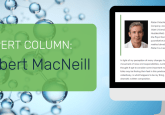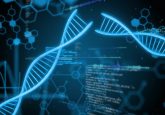In the Zone: Peptide Bioanalysis Sample Preparation
INFOGRAPHIC | PODCAST | RESOURCES
Bioanalysis is a critical part of the discovery and development of peptide therapeutics. LC–MS is an established technique for quantifying peptides; however, analysis of target analytes requires extraction from a matrix of biochemically similar peptides and proteins. Low peptide recovery, incurred through poor solubility, inefficient extraction and adsorption to vials and plates, can lead to sub-optimal quantitative performance.
PODCAST
 Key challenges in sample preparation for peptide bioanalysis: a podcast with Mary Lame
Key challenges in sample preparation for peptide bioanalysis: a podcast with Mary Lame
In this interview, we talk to Mary Lame, Principal Applications Scientist who supports discovery bioanalysis for both large and small molecules, providing application development and support with Waters Corporation (Milford, MA, USA). Mary will discuss the key challenges scientists face developing robust peptide bioanalytical assays and introduces Waters approach for large molecule bioanalytical quantification method development including: pre-analytical sample preparation, as well as offering tips & tricks to help avoid the most common pitfalls working with peptides to help improve peptide assay performance and to streamline assay development. She also discusses how to enable highly sensitive and robust quantification of biomolecules from complex biomatrices.
INFOGRAPHIC
 Peptide bioanalysis sample preparation
Peptide bioanalysis sample preparation
The biggest challenge in peptide bioanalysis is purification of the peptide of interest from a matrix of biochemically similar peptide and proteins. Poor sample recovery from matrix impacts the quantitative performance (linearity, sensitivity and repeatability) of LC–MS assays. Improve peptide recovery and assay robustness by following these tips & tricks for the 5 key challenges in peptide bioanalysis sample preparation.
RESOURCES
![]() 1Improving recovery, sensitivity and repeatability in peptide quantification workflows
1Improving recovery, sensitivity and repeatability in peptide quantification workflows
2Waters: peptide and protein bioanalysis boot camp
3What challenges are there for the biotransformation scientist and how does software address them?





